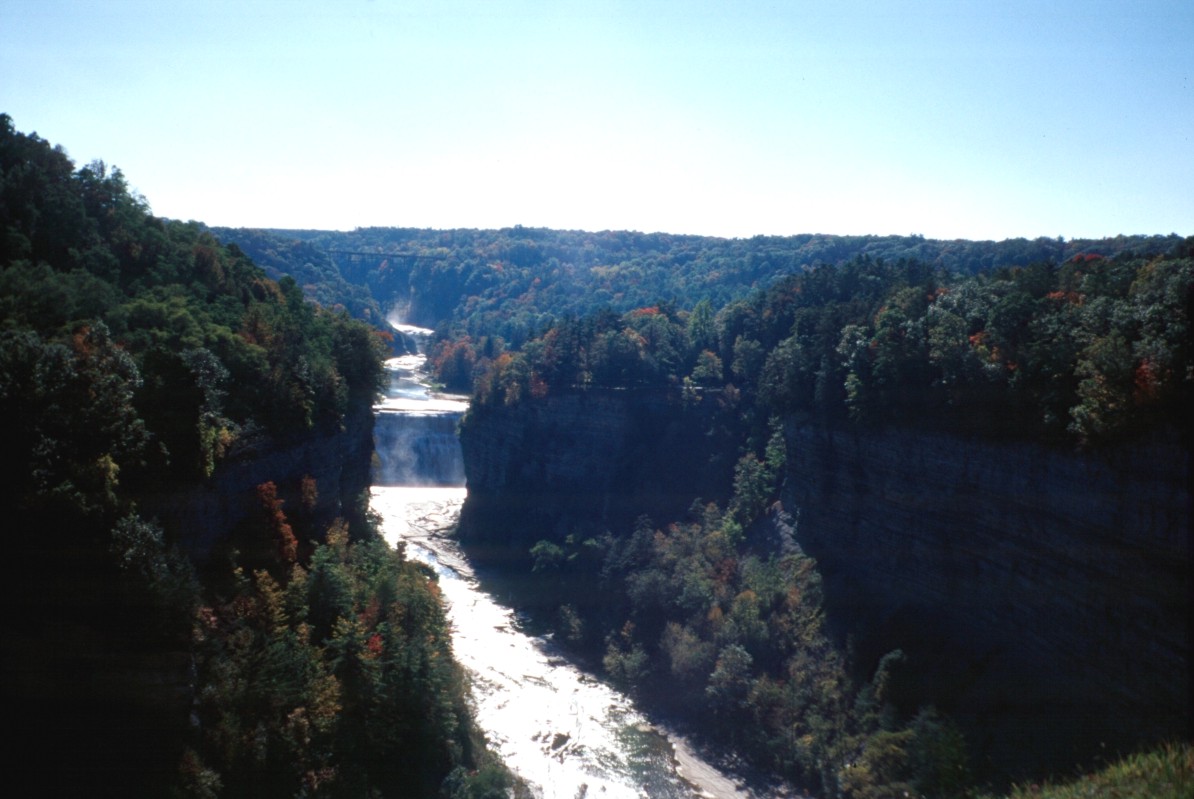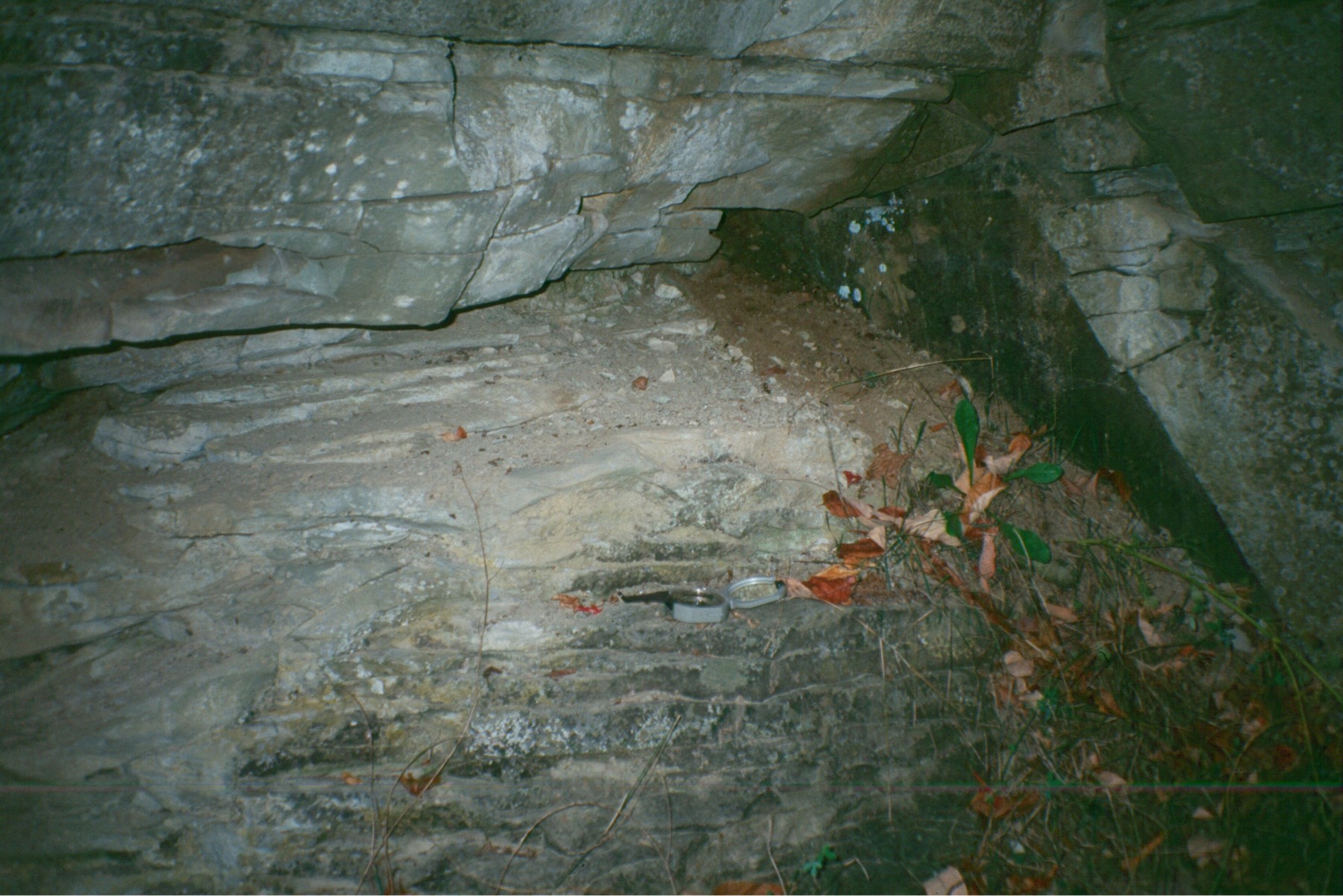Nunda Formation (Clarke, 1897)
Lithology: The Nunda Formation is comprised of thickly bedded, amalgamated sandstones. In the eastern section, along the Genesee River (particularly at Letchworth State Park), the Nunda Formation reaches almost 75 meters in thickness. Towards the west, in Erie and Wyoming counties, the sandstone beds thin and the become interbedded with gray shales and thin siltstones. The sandstone beds display either a massive or an undulatory, flaggy-bedded character. Two tongues of the Nunda Formation extend westward to pinchouts in central Erie County. Solemarks are more commonly observed in the thicker sandstone packets towards the east. Soft-sediment deformation is also common in outcrops of the Nunda Formation at Letchworth State Park.
Ichnology: Vertical escape burrows were commonly observed within the sandstone of the Nunda Formation (Hasiotis and Piechocki, 1990), indicating very rapid deposition.
Depositional Environment: The Nunda Formation is interpreted to represent turbidites deposited in the lower offshore to the basin environment.
Nunda Formation

Upper Fall at Letchworth State Park marks the contact of the base of the Nunda Fm.

View of the Middle and Upper Falls at Letchworth State Park, display the West Falls Group.

Close-up of the Nunda Fm. at Letchworth State Park, Brunton compass for scale.